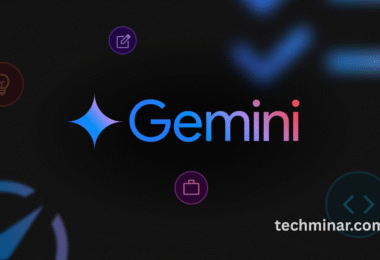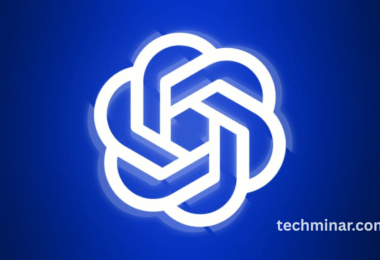In a significant leap for AI-driven software development, Windsurf, formerly known as Codeium, has unveiled its proprietary in-house AI models. This strategic move positions Windsurf at the forefront of the emerging “vibe coding” paradigm, where developers leverage AI to transform natural language prompts into functional code. By developing its own AI models, Windsurf aims to enhance code generation accuracy, streamline development workflows, and reduce reliance on third-party AI providers.
The launch of these in-house models signifies Windsurf’s commitment to innovation and control over its technological stack. With a focus on optimizing developer productivity and fostering a more intuitive coding experience, Windsurf’s latest advancement is poised to reshape the landscape of software engineering.
The Emergence of Vibe Coding in Modern Development
Vibe coding represents a transformative approach to software development, where developers input natural language descriptions, and AI models generate the corresponding code. Coined by OpenAI co-founder Andrej Karpathy in February 2025, this methodology shifts the developer’s role from manual coding to guiding and refining AI-generated outputs .
This paradigm democratizes coding, enabling individuals with minimal programming expertise to create functional software. By abstracting complex coding processes, vibe coding accelerates development cycles and fosters innovation across various industries.
Windsurf’s Transition from Codeium to AI Innovator
Originally launched as Codeium, Windsurf has rapidly evolved into a leading AI-powered coding platform. Under the leadership of CEO Varun Mohan, the company has embraced a “dehydrated” growth strategy, focusing on lean operations and essential hiring to maintain agility and efficiency.
Read More : OpenAI brings its GPT-4.1 models to ChatGPT
This strategic approach has enabled Windsurf to attract significant venture capital, raising over $200 million and achieving a valuation of $1.25 billion. The company’s emphasis on innovation and adaptability has positioned it as a formidable player in the AI coding landscape.
Technical Innovations Powering Windsurf’s AI Models
Windsurf’s in-house AI models are designed to deliver advanced code generation capabilities, leveraging deep learning and contextual understanding to produce accurate and efficient code. Key technical features include:
- Cascade System: Maintains project-wide context, enabling seamless code suggestions and modifications across multiple files.
- Multi-Engine Integration: Supports various AI engines like CLA 3.5 Sonic and Gemini 2.0 Flash, offering flexibility and optimized performance for different coding tasks .
- Model Context Protocol (MCP): Enhances AI workflows by securely connecting with custom tools and services, facilitating comprehensive project management.
- These innovations collectively contribute to a robust and adaptable coding environment, empowering developers to tackle complex projects with increased efficiency.
Enhancing Developer Productivity Through AI Integration
Windsurf’s AI models significantly boost developer productivity by automating routine tasks and providing intelligent code suggestions. Features such as real-time web previews, intelligent code assistance, and AI-powered debugging streamline the development process, allowing developers to focus on higher-level problem-solving.
The platform’s ability to understand and adapt to individual coding styles further enhances efficiency, reducing the learning curve for new projects and facilitating seamless collaboration among development teams.
Strategic Implications of In-House AI Model Development
By developing its own AI models, Windsurf gains greater control over its technological infrastructure, reducing dependency on external providers and enabling tailored optimizations. This strategic move allows for:
- Enhanced Customization: Tailoring AI functionalities to specific user needs and project requirements.
- Improved Data Privacy: Ensuring that user data remains secure and is not utilized for external model training.
- Accelerated Innovation: Facilitating rapid development and deployment of new features aligned with user feedback and market trends.
- These advantages position Windsurf to deliver a more responsive and secure coding platform, aligning with the evolving demands of the software development industry.
Windsurf’s Impact on the AI Coding Ecosystem
Windsurf’s advancements contribute significantly to the broader AI coding ecosystem, setting new standards for integrated development environments (IDEs). By combining agentic AI capabilities with user-friendly interfaces, Windsurf offers a compelling alternative to existing tools like GitHub Copilot and Cursor.
The platform’s emphasis on contextual awareness, multi-file editing, and intelligent command execution enhances the coding experience, fostering a more intuitive and efficient development process.
Future Prospects and Industry Implications
AI continues to reshape the software development landscape, Windsurf’s in-house models position the company to lead in innovation and adaptability. Potential future developments include:
- Expanded Language Support: Broadening compatibility with additional programming languages to cater to diverse developer needs.
- Enhanced Collaboration Tools: Integrating features that facilitate real-time collaboration and communication among development teams.
- Continuous Learning Capabilities: Implementing mechanisms for the AI models to learn and evolve based on user interactions and feedback.
These prospects underscore Windsurf’s commitment to driving progress in AI-assisted software development.
Frequently Asked Questions
What is vibe coding?
Vibe coding is an AI-driven approach where developers input natural language prompts, and AI models generate the corresponding code, streamlining the development process.
How does Windsurf’s Cascade system enhance coding?
Cascade maintains project-wide context, enabling intelligent code suggestions and seamless modifications across multiple files, improving efficiency and accuracy.
What are the benefits of Windsurf’s in-house AI models?
Developing in-house AI models allows Windsurf to customize functionalities, ensure data privacy, and accelerate innovation tailored to user needs.
How does Windsurf compare to other AI coding tools?
Windsurf offers a unique combination of agentic AI capabilities, contextual awareness, and user-friendly interfaces, setting it apart from tools like GitHub Copilot.
Can Windsurf support multiple programming languages?
Yes, Windsurf supports various programming languages, including Python, JavaScript, and Java, with plans to expand compatibility further.
Is Windsurf suitable for collaborative projects?
Absolutely. Windsurf includes features that facilitate real-time collaboration, allowing multiple developers to work seamlessly on the same codebase.
How does Windsurf ensure data privacy?
Windsurf prioritizes data privacy by not using user code for external model training and implementing robust security measures to protect user data.
What platforms is Windsurf available on?
Windsurf is available for Windows, macOS, and Linux, ensuring developers’ accessibility across different operating systems.
Conclusion
Windsurf’s launch of in-house AI models marks a significant milestone in AI-assisted software development. By enhancing code generation capabilities, ensuring data privacy, and fostering innovation, Windsurf is poised to redefine the developer experience and shape the future of coding.





